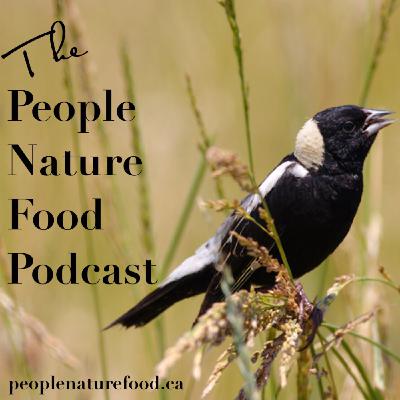Discover The People Nature Food Podcast
The People Nature Food Podcast

6 Episodes
Reverse
This episode is for you if you are a farmer, land manager, policy maker, or scientist. Dr. Jocelyn Lavallee (Natural Resources Ecology Laboratory, Colorado State University) joins your host Tom Franklin to discuss all things "soil organic matter". We learn that testing for soil organic matter may offer an inadequate picture of your land as it changes in response to a climate change world. What then should be tested? .... "It's as easy as POM and MAOM".2:59...how to say SOM POM MAOM and what they mean4:02...measuring SOM by combustion is a thing of the past6:10...measuring POM and MAOM based on density and size14:35...Tom suggests using other acronyms and Jocelyn counters with "this is the most straight forward way"18:56...what Jocelyn would like to see when farmers sample soil...standard practices22:19...Earthworm castings are hot spots for biological activity23:54...the 4 per mille initiative...when it comes to persistence MAOM is in it for the long haul30:50...the quality of POM depends on the litter quality that it came from32:38...could livestock create the highest quality POM without N P K fertilizer inputs?34:08...nitrogen limits increases in MAOM...are some farmers exaggerating SOM progress or are their claims real?40:49..."use POM and MAOM for pools in climate models"...the present models are limited in their usefulnessThanks Jocelyn!
What would you say if the methane emissions from your cattle could be reduced by up to 50% in the very near future?Yes please, bring it on! Dr. Karen Beauchemin joins your host Tom Franklin, and hints at the incredible influence of one tiny compound, named 3NOP, on the rumen of cattle.
Sunshine, pasture, soil, and cows...this may be the package deal that fights climate change!Paige Stanley explains how keeping cattle on pasture will cause the soil to lock away carbon. How much?...6.65 kilograms CO2 for every kilogram of beef...but when will we hear about it in the news or in our classrooms? The answer is when more research in this area is done. We also talk about land-sharing versus land-sparing strategies for food production and biodiversity. Listen as Tom struggles to say "adaptive multipaddock grazing" and "soil carbon sequestration" while he talks about these important topics.A great big thank you goes out to Paige Stanley for sharing her knowledge with us!
Are you dreaming of summer? Sunshine, the smell of burgers on the BBQ, and......yard work? in this episode you will be encouraged to rethink your lawn and to appreciate the intrinsic value of native grasses. My thanks go out to Art Wiebe for enthusiastically sharing his knowledge and experience.
Thanks to Dr. Noah Perlut, Ray Ford, and Stan Eby for participating and being so generous with their time. Each of these men thoughtfully share their ideas about environmental stewardship and farming.First we come to understand the world of a wildlife biologist, and as we do so we recognize the genuine interest and enthusiasm that Dr. Perlut has for the natural world and in particular the Bobolink. Next we meet Ray Ford, a farmer and writer who thoroughly describes his strategies for conservation haying and pasture management including the "songbird strip" . Later Stan Eby provides an interesting and informative account of the changes for the beef farmers of Bruce County and further abroad. Tom Franklin, the host of the People Nature Food Podcast, works to unpack the issue of the Bobolink as a threatened species in Ontario and how this relates to current farming practices.(Bobolink In Grass Photo David Watkins)
Learn the significance of the Penetangore River to the first European Settlers in 1848, and how its natural state was almost immediately changed.Are you ready for some facts? We'll review the geography of the area as a foundation for better understanding our "place".Consider the watershed's most recent report card with Jo-Anne Harbinson from Saugeen Valley Conservation Authority .What's missing? In a future podcast, I would like to examine the watershed before 1848. I think it will take some research, as the historical record focuses on locations to our north (Inverhuron, Port Elgin, Southampton, Saugeen First Nations, Owen Sound).(Bobolink In Grass Photo David Watkins)





